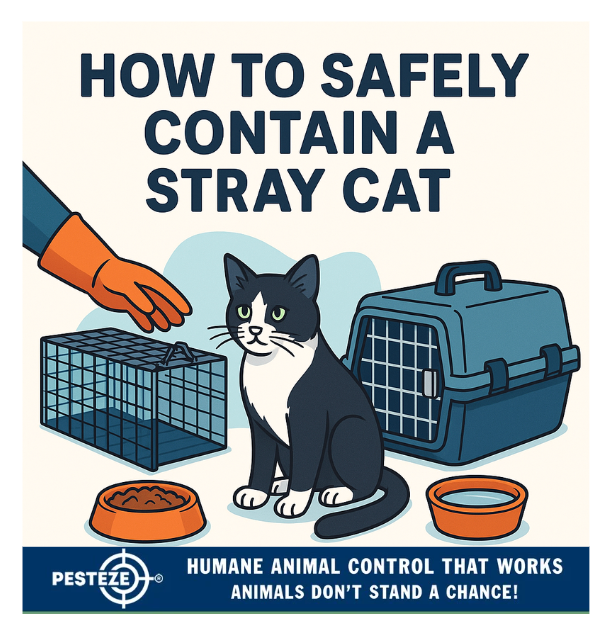HOW TO SAFELY CONTAIN A STRAY CAT

HOW TO SAFELY CONTAIN A STRAY CAT
SUMMARY
Stray cats may seem friendly or fearful, but handling them requires care. This guide explains safe, humane steps to contain a stray cat while protecting yourself and the animal.
FEATURES
-
Observe first: Assess the cat’s behavior from a distance.
-
Protect yourself: Wear gloves and long sleeves.
-
Use humane traps: Safe cages designed for cats.
-
Contain calmly: Guide the cat into a carrier or crate.
-
Provide essentials: Food, water, and a quiet space.
-
Contact professionals: Call animal control or shelters for support.
GUIDE DESCRIPTION
Stray cats are common in many neighborhoods, and while some are lost pets, others may be feral or unaccustomed to people. Knowing how to safely contain a stray cat ensures both your safety and the cat’s well-being.
The first step is to observe the cat’s behavior. Some strays may be approachable, while others act fearful or aggressive. Approaching too quickly can cause stress or risk injury. Take note of whether the cat seems feral, injured, or simply lost.
Always protect yourself before attempting containment. Wear gloves, long sleeves, and pants to minimize the risk of scratches or bites. Even friendly cats can lash out when frightened.
One of the safest options is to use a humane trap. These cages are designed to safely contain cats without injury. Place food inside the trap to lure the cat in, and check frequently to avoid prolonged stress. Humane traps are often available from shelters or animal control agencies.
If the cat appears calm, you can try to guide it into a carrier or crate. Place food or bedding inside and gently encourage the cat to enter. Avoid forcing the cat, as this can lead to injury or escape.
Once contained, provide essentials. Place the cat in a quiet space away from loud noises and activity. Provide water and some food, but avoid overhandling until professionals arrive.
Finally, contact animal control or local shelters. They can scan for a microchip, provide medical attention if needed, and determine whether the cat has an owner or should be placed for adoption.
By observing behavior, using protective gear, employing humane traps, and working with professionals, you ensure that the stray cat is contained safely and responsibly. These steps protect you from injury while giving the cat the best chance at care and recovery.
- Saneeth Thota


Comments 0